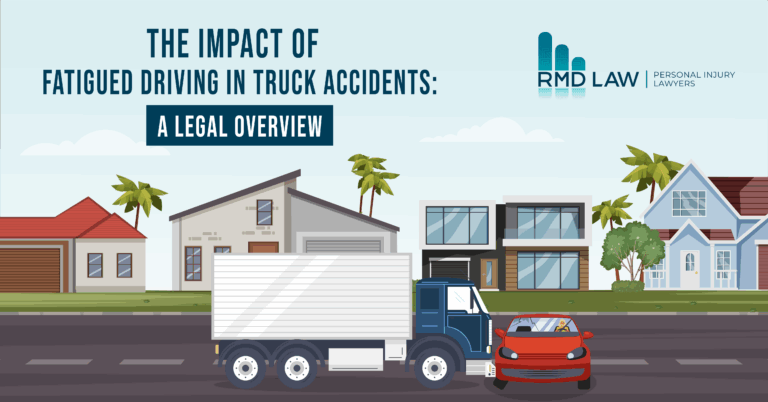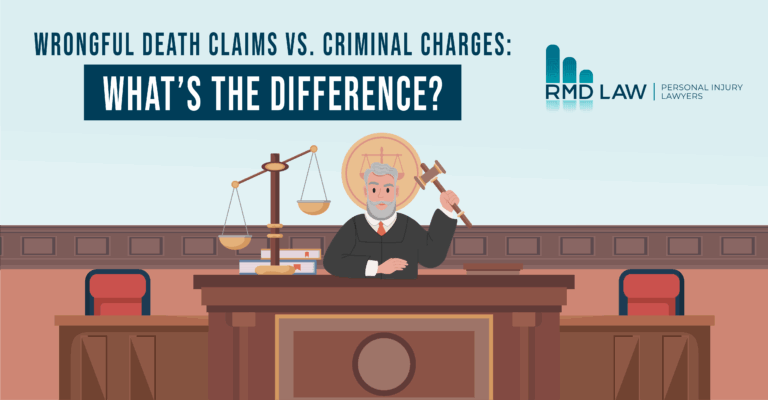
Key Takeaways:
- Sharp Premium Hikes After Accidents: California drivers can face significant car insurance premium increases after an at-fault accident. These increases often range from 20% to 50% or more depending on the insurance company and the severity of the crash. For example, with Nationwide, one at-fault accident raises full-coverage auto insurance premiums by an average of about 43%, adding roughly $1,200 per year for the typical driver. These higher car insurance rates generally remain in effect for around three years before returning to normal.
- Fault Matters: Protected if Not At Fault: California law prevents insurers from raising rates for accidents in which you were not primarily at fault, meaning you were 50% or less responsible. If you are not primarily at fault, your auto insurance premium may not be subject to an increase under California law. This consumer protection, established under Proposition 103, shields drivers from surcharges after no-fault accidents. In contrast, some other states allow insurers to increase premiums for any claim, no matter who is at fault.
- Severity and History Influence the Increase: Major or costly accidents trigger larger insurance rate increases. For example, a collision involving injuries or DUI is likely to result in a much higher premium hike and even possible non-renewal compared to a minor fender-bender. Drivers with multiple prior accidents or violations will also face steeper increases, as insurers view them as high-risk. Conversely, a previously clean driving record may help soften the impact.
- No “Accident Forgiveness” in California: Many insurers in other states offer accident forgiveness programs to waive the first at-fault accident’s surcharge, but California prohibits this feature. Under state regulations, including Proposition 103’s ban on certain excessive rate practices, insurers cannot offer or apply accident forgiveness in California. This means even a first-time accident is likely to affect your insurance rate, making safe driving and avoiding claims especially important for California drivers.
- Rising Base Rates Compound the Impact: Car insurance costs in California have been increasing sharply, with some estimates showing nearly a 50% rise in 2024 alone due to factors such as inflation in repair costs and recent regulatory changes. As insurers implement substantial statewide rate increases, any post-accident surcharge adds a significant financial burden on top of already high premiums. A single at-fault collision can result in thousands of dollars in additional premiums over the surcharge period, in addition to out-of-pocket expenses from the accident itself.
The Long-Term Cost of At-Fault Accidents in California
A car accident can have significant and lasting financial repercussions beyond property damage or personal injury. One of the most substantial costs comes in the form of higher car insurance premiums. On average, drivers involved in a recent at-fault accident pay approximately 43% more for full coverage than drivers with clean records. In dollar terms, this can translate to $800 to $1,200 in additional premiums per year, depending on the coverage level. These increases typically take effect at the policy renewal following the car insurance claim, as insurers reassess risk after a claim is filed.
California drivers frequently face even higher surcharges. Factors such as dense traffic, elevated repair costs, and the state’s regulatory environment often result in premium increases above the national average. Industry data indicates that an at-fault accident in California can increase premiums by 20% to 50%. For instance, one auto insurance provider may raise rates by roughly 30%, while another could impose increases exceeding 70% for the same incident. The precise adjustment depends on factors such as accident severity, claim costs, and the driver’s prior accident history, as insurers use this record to assess risk and determine premium changes.
These premium increases apply primarily to at-fault accidents. When a driver causes a collision that triggers an insurance payout, insurers categorize the driver as higher risk and adjust rates accordingly. In California, accidents remain on a driver’s record for three years, and insurers may apply surcharges throughout this period. Most surcharge programs phase out after three to five years of clean driving. Insurers also consider the likelihood of future claims when setting rates, as drivers who file multiple claims in a short time may be viewed as higher risk, leading to steeper surcharges or even affecting policy renewal. This means a 40% increase resulting from a single at-fault accident can persist for several years, creating a substantial cumulative financial burden.
To illustrate, consider a driver with an annual insurance premium of $1,500 who is involved in an at-fault collision. If the insurer imposes a 45% rate increase, the driver would pay an additional $675 annually. Over a three-year surcharge period, the total added cost could reach $2,025, excluding deductibles or other out-of-pocket expenses.
For many drivers, the long-term cost of higher premiums after an at-fault accident exceeds the immediate expenses of vehicle repair or medical bills. Even a single accident can have a significant and lasting financial impact, making insurance premium increases one of the most costly long-term consequences of being found at fault in California.
Key Factors That Influence Post-Accident Rate Increases
Not all accidents or drivers are treated equally by insurance companies. When recalculating your premium after a crash, insurers weigh several key factors:
- Degree of Fault: Fault is the primary factor in whether your insurance rate increases in California. If you are not primarily at fault, your insurer cannot legally surcharge you. California law defines “principally at fault” as being 51% or more responsible for an accident. Drivers who are 50% or less at fault must be treated as no-fault incidents, which legally prevents a rate increase. This protection is unique to California; in other states, even filing a claim where another driver is at fault can sometimes raise premiums. If you are mostly or fully at fault, your insurer may impose a surcharge.
The extent of your fault also matters. For example, a collision where you are 100% at fault typically triggers a larger hike than one where you are 60% at fault and costs are shared. Under California’s comparative negligence system, any percentage of blame can result in a surcharge, with higher fault percentages producing greater increases. When multiple drivers share fault, insurance companies may allocate responsibility among all parties, which can impact how much each driver’s premium increases. At-fault drivers typically face the highest premium hikes.
- Accident Severity & Claim Cost: The severity of an accident and whether a claim is filed are major factors that can influence insurance premium adjustments. Minor incidents, such as a low-impact scrape, may have minimal or no effect on your insurance premiums if the damage is below the California DMV reporting threshold or your deductible and the repairs are paid for without filing a claim. Filing a claim with your insurer, even for a minor incident, creates a record with the insurance company. Depending on the insurer’s policies and the driver’s degree of fault, this may result in a premium increase. Other factors, such as speeding tickets, DUIs, and prior violations, can also contribute to how much your premium increases after an accident.
- Insurance Company Policies: Each insurance company has its own method for calculating post-accident premium adjustments. There is no uniform standard, and the same type of at-fault accident can lead to very different rate changes depending on the insurer. Some companies may apply moderate increases, while others may impose significantly higher surcharges for comparable incidents. Insurers also vary in how they handle multiple accidents. While most companies will continue to provide coverage after a single at-fault accident, repeated incidents can result in higher premiums and, in some cases, non-renewal or policy cancellation at the time of renewal.
California drivers should carefully review how their insurer calculates surcharges and consider comparing policies if their premium increase seems substantial. Car insurance companies differ in their eligibility criteria, pricing strategies, and available programs, so comparing providers can help you find the best fit. Shopping around may reveal alternative coverage options, even with an at-fault accident on record, without violating state regulations or insurance contracts.
- Driving History & Driver Profile: A driver’s prior record is a key factor in determining post-accident premium adjustments. Generally, a first accident or claim after many years of clean driving may result in a smaller increase than for a driver with a history of violations or prior claims. Other personal factors, such as age and location, also influence rate changes. Younger drivers are typically considered higher risk, so a collision may produce a larger premium increase than for an older driver in a similar accident. California insurers also consider territory, meaning accidents in high-traffic urban areas may result in different surcharges than those in rural locations. While these factors cannot be changed immediately, maintaining a clean driving record over time can help reduce future premium increases and restore applicable discounts.
- Accident Forgiveness and California Regulations: In other states, accident forgiveness is often available as an optional add-on or optional coverage that drivers can purchase for extra protection. However, California law generally does not allow accident forgiveness programs that prevent a premium increase after a first at-fault accident. Under Proposition 103 and related state regulations, insurers are prohibited from applying extra “forgiveness” fees or unjustified rate reductions, which means most California drivers are not eligible for traditional accident forgiveness benefits. Some insurers may advertise accident forgiveness in California, but in practice, this typically affects internal customer loyalty metrics rather than preventing a surcharge on the policy itself. As a result, even a first at-fault accident is likely to impact premiums.
Maintaining safe driving habits and taking advantage of available discounts, such as the Good Driver Discount or defensive driving programs, remain important strategies to help mitigate premium increases. California’s Good Driver Discount provides a 20% reduction for drivers with three or more years of clean driving; if an accident affects eligibility, the discount can be regained after ten years without further incidents.
The effect of an accident on your insurance premiums depends on several factors, including your degree of fault, the severity of the accident, your insurer’s policies, and your driving history. Two drivers in the same area involved in similar accidents may experience very different premium adjustments based on these variables. What is consistent under California law is that at-fault accidents generally result in higher insurance premiums, often by a significant amount.
How Long Will an Accident Affect Your Insurance?
It is common for drivers to wonder how long an at-fault accident will impact their insurance premiums. The duration an accident remains on your driving record, often referred to as the accident stay, directly affects how long your premiums remain elevated. State laws play a significant role in determining how long insurance companies typically apply surcharges and how regulations influence the duration of increased premiums. In California, insurers generally consider the last three years of driving history when setting rates. State law specifically prohibits surcharges for accidents or violations that are more than three years old. This means that an accident from several years ago should not influence your current premiums.
Most insurance policies renew every six or twelve months, and surcharges for an at-fault accident typically last around three policy years. For example, an accident occurring in mid-2022 might affect premiums through mid-2025, after which rates may decrease at renewal, provided no additional incidents occur. Certain major incidents or serious violations, such as a DUI, can have longer effects, often extending five to seven years. California’s Department of Insurance generally enforces the three-year rule for standard at-fault accidents, including considerations for Good Driver Discount eligibility. The surcharge period is typically measured from the date of the accident, not from the date the claim is reported or resolved.
While the surcharge period ends after a few years, records of the accident may remain accessible. The California DMV retains accident records for at least three years, and insurers share claims history through databases such as the Comprehensive Loss Underwriting Exchange (CLUE). Insurers may be aware of past accidents even after the surcharge period ends, but they should not charge for incidents beyond the legally allowed timeframe. Maintaining a clean driving record over time reduces the influence of older incidents on insurance decisions.
In summary, expect approximately three years of elevated premiums for a standard at-fault accident in California. After this period, rates should return to baseline levels, potentially significantly. Drivers may benefit from reviewing their policy at the end of the surcharge period and shopping for new coverage if rates are not adjusted automatically.
Minor vs. Major Accidents: Emerging Trends in Premium Adjustments
Insurance companies increasingly differentiate between minor and major accidents when determining premium adjustments. Even low-speed or seemingly minor collisions can generate reportable claims due to the rising costs of vehicle repairs and medical care. The following factors help explain how insurers assess and categorize accidents:
- Small Claims: Low-impact incidents with minimal damage may have a limited effect on premiums, particularly if the cost of repairs falls below the California DMV reporting threshold or your policy deductible and you pay out-of-pocket without filing a claim. Filing a claim, however, creates a record with your insurer and may still affect premiums depending on fault and company policy. California’s comparative negligence rules prevent insurers from surcharging drivers who are not primarily at fault for an accident, which provides protection against premium increases in no-fault incidents. Minor accidents may still affect premiums if a claim is filed and the driver is deemed at fault.
- Major Accidents: Serious accidents, such as collisions causing injuries or substantial property damage, generally result in higher premium adjustments. Insurers assess these incidents as indicators of increased risk, and severe claims may trigger not only standard surcharges but also higher base rates. Accidents that exceed liability coverage or involve bodily injury may place drivers in a higher-risk category, potentially affecting policy renewal. In extreme cases, drivers may need to seek coverage through the high-risk or surplus market, which carries substantially higher premiums.
- Multiple Accidents: The frequency of accidents compounds premium impacts. A second at-fault accident while a prior one is still on record often results in larger surcharges and may affect eligibility for preferred coverage. For example, California’s Good Driver Discount is lost if a driver accrues more than one point from accidents within a 36-month period, which can lead to significantly higher base rates in addition to surcharges. Maintaining careful driving practices after an initial accident is critical to avoid compounding premium increases.
- Premium Relief for Claims-Free Driving: Many insurers provide incentives for claims-free driving over time. While these programs do not erase existing surcharges, renewal discounts or reduced deductibles for accident-free years can help offset premium increases. In California, such programs may coincide with the expiration of surcharge periods, offering drivers a potential combined benefit.
In summary, insurers are increasingly distinguishing between minor and major accidents in setting rates. Minor incidents may have limited impact, especially if handled outside of claims, while major accidents are driving higher surcharges and base rate adjustments. This trend, coupled with a hardening insurance market in California, has contributed to substantial premium increases in recent years, making it increasingly important for drivers to understand how accident severity and frequency affect long-term insurance costs.
How At-Fault Crashes Affect Insurance Premiums and How to Protect Yourself
When considering the financial impact of an accident, it is natural to focus on immediate costs such as vehicle repairs, medical bills, and deductibles. However, the longer-term effect on insurance premiums can also be substantial, and many drivers may not anticipate how significantly their rates can increase following an at-fault accident.
For California drivers, awareness of the long-term financial impact of accidents is essential. Even a brief lapse in judgment on the road can lead to substantial increases in insurance premiums over the following years. Safe driving is not only critical for avoiding injury but also for protecting your financial well-being. Industry data indicates that at-fault collisions in California can result in significant premium increases, with some analyses showing average hikes in the range of 40%–50%. These increases represent a considerable expense for families, particularly given that full-coverage premiums in the state are already relatively high. Over time, elevated rates following an at-fault accident can accumulate, underscoring the importance of safe driving and proactive insurance management.
Safe driving is the most effective way to protect both your financial and personal well-being. Avoiding accidents helps maintain a clean driving record and keeps insurance premiums as low as possible. Practices such as obeying speed limits, minimizing distractions, and never driving under the influence are not just common-sense safety measures; they also help prevent the long-term financial consequences of a crash. While public campaigns often emphasize immediate damages from collisions, it is equally important to understand the extended impact on insurance costs. Each time you drive, maintaining safe habits can prevent both injuries and years of higher premiums.
FAQs
- How much can my car insurance go up after an at-fault accident in California?
Premium increases vary depending on your insurer, the severity of the accident, and your driving history. Industry data shows that at-fault accidents in California commonly result in rate hikes ranging from 20% to 50% or more. Nationwide, the average increase for a full-coverage policy after a single at-fault accident is about 43%. - Will my insurance go up if I was not at fault?
No. California law protects drivers from premium increases if they were not primarily at fault for an accident. Under Proposition 103, insurers cannot surcharge drivers who are 50% or less responsible for a crash. This legal protection helps shield drivers from financial penalties for no-fault accidents. - How do insurers determine how much my rate will increase?
Insurers consider several key factors, including your degree of fault, the severity of the accident, whether injuries or serious violations like DUI were involved, and your prior driving record. Major accidents or multiple prior claims typically result in larger increases, while a clean driving history may help soften the impact. - Does California offer accident forgiveness programs?
No. Unlike some other states, California generally prohibits accident forgiveness programs under state regulations, including Proposition 103. Even a first at-fault accident is likely to affect your insurance premium. Maintaining safe driving habits and taking advantage of discounts, such as the Good Driver Discount or defensive driving courses, are the primary ways to manage premiums. - How long will an accident affect my insurance rates in California?
In California, insurers typically consider the last three years of driving history when setting rates. Surcharges for an at-fault accident usually last about three policy years. Serious incidents, like DUI-related crashes, may have longer effects. After this period, rates should return to baseline, although the accident record may still be visible to insurers when applying for new policies.
Involved in a Car Accident in California? RMD Law Can Help
If you have been injured or affected by a car accident in California, especially when fault is disputed or serious injuries are involved, the consequences can be both financial and emotional. Understanding your rights and options early is essential, and you do not have to face these challenges alone.
RMD Law’s experienced California car accident attorneys represent individuals who were injured or not at fault. We help clients protect themselves from undue blame, work with insurance companies, and ensure fault is accurately assigned. Our team can assist in presenting evidence, negotiating shared fault claims, and preventing improper premium increases. We also provide guidance if an insurance company applies a surcharge in violation of California law or mishandles a no-fault accident.
With timely legal support, you can pursue all avenues of recovery, safeguard your insurance record, and mitigate the long-term financial impact of an accident. Safe driving is always the best protection, but if an accident occurs, professional guidance can help ensure you are not unfairly penalized.
Contact RMD Law today at (949) 828-0015 for a free consultation. We will review your case, answer your questions, and help you navigate the legal and insurance process. Your safety, financial security, and peace of mind are our priorities.
- How Much Will My Insurance Increase After an Accident?: The Hidden Cost of Car Accidents in California - November 17, 2025
- California’s Weirdest Traffic Laws: Rules You Didn’t Know Existed - November 12, 2025
- Bicycle Laws California: What Every Cyclist Should Know - November 6, 2025




